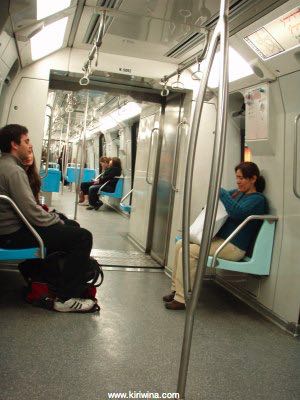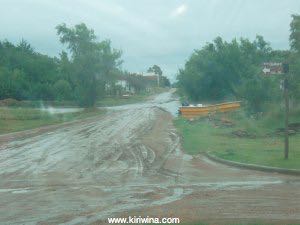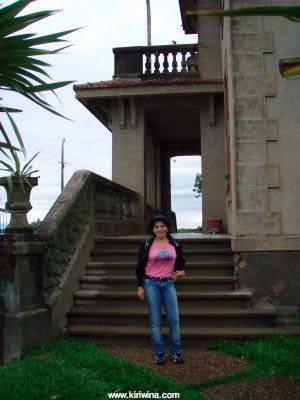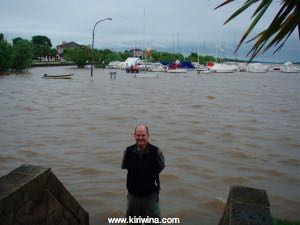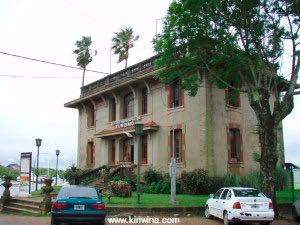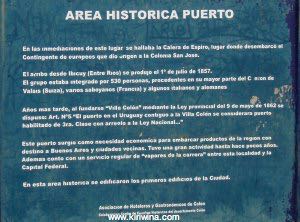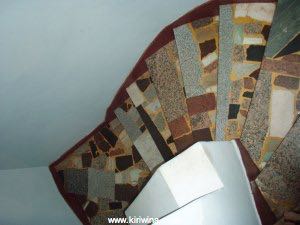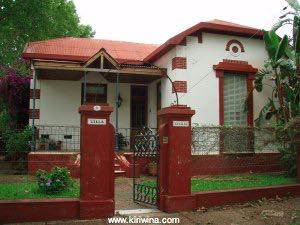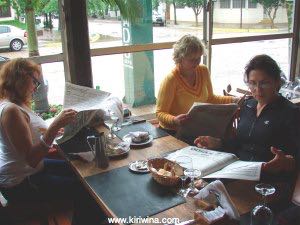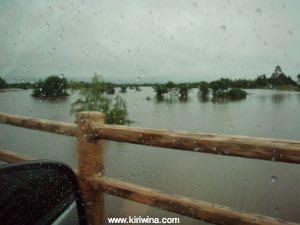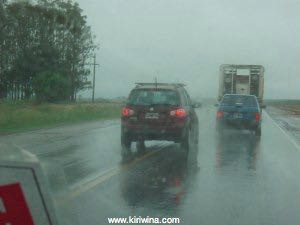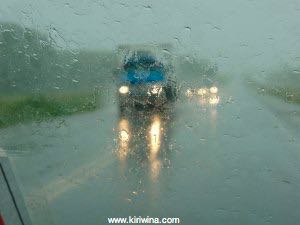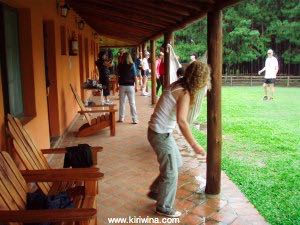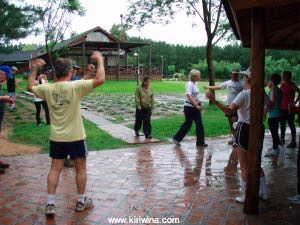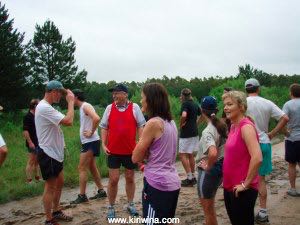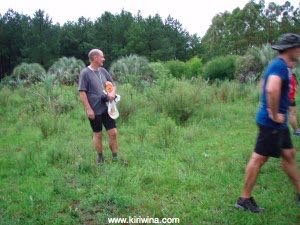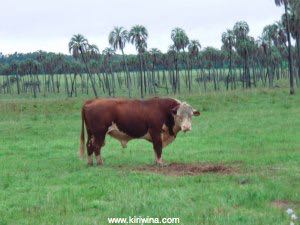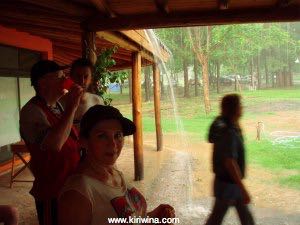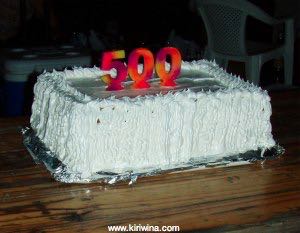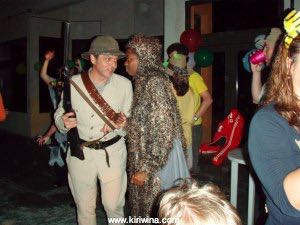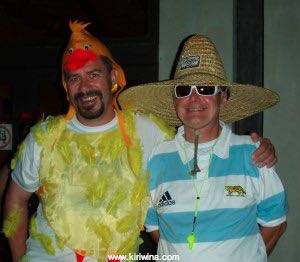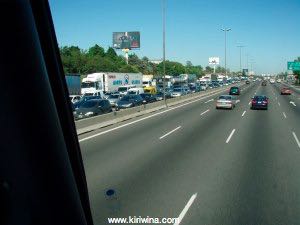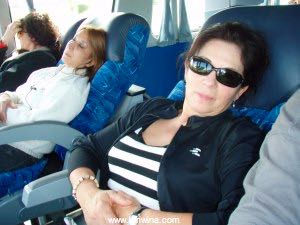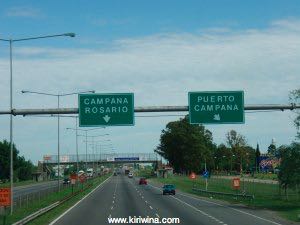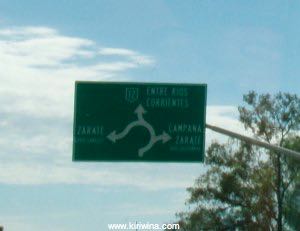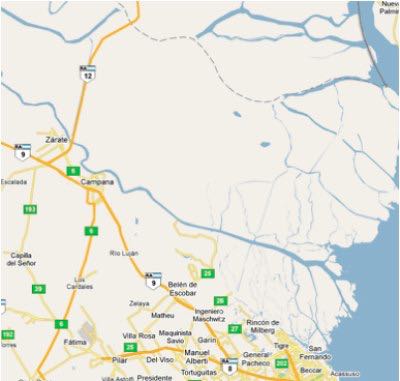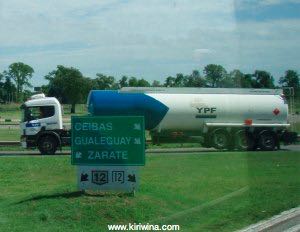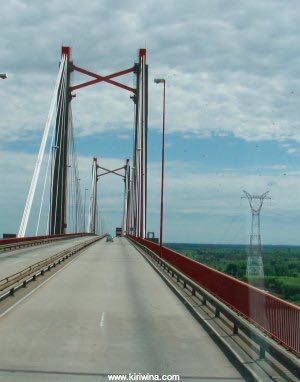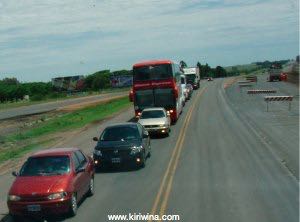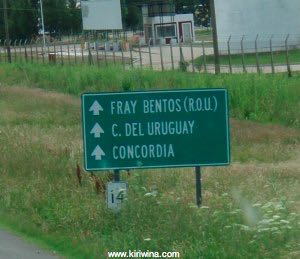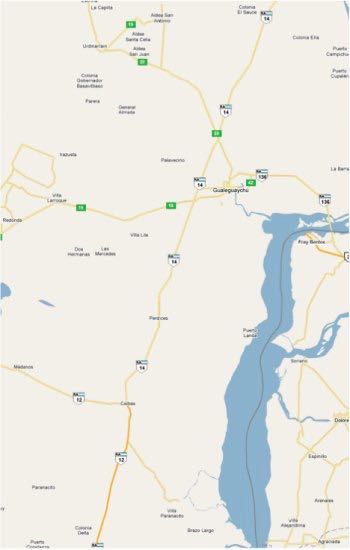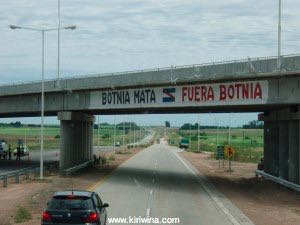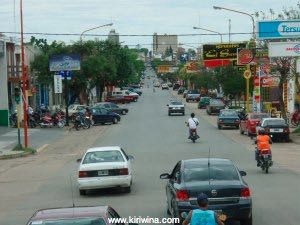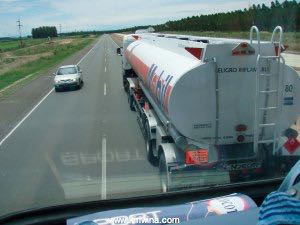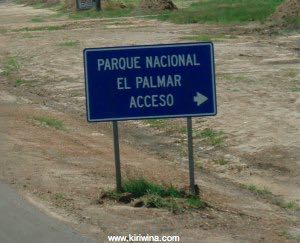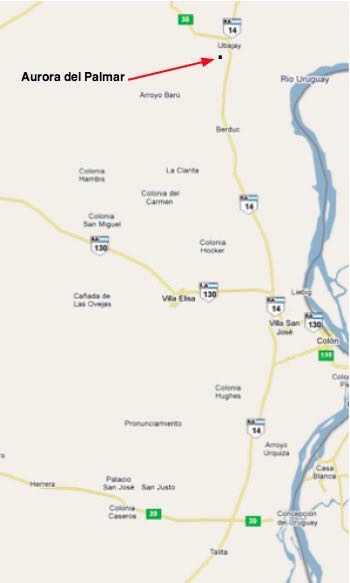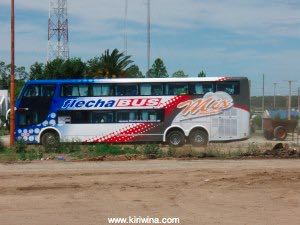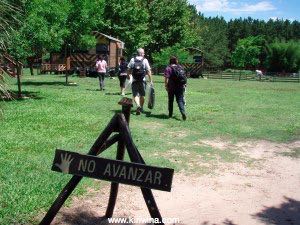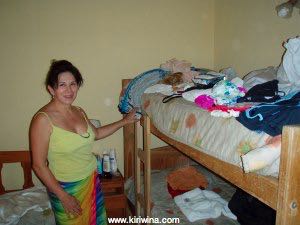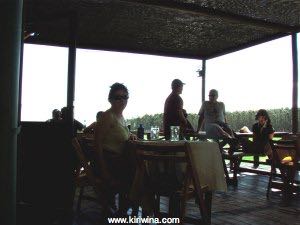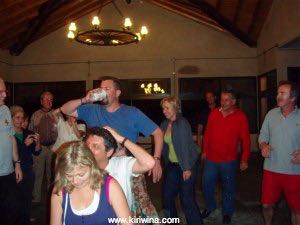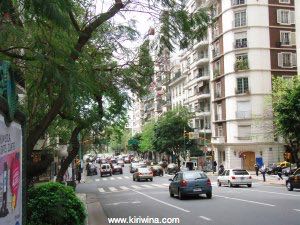Tigre to Carmelo
They operate high speed catamarans and our route took us via Rio Lujan, Canal Vinculacion, Rio Urión, Rio Parana, Canal del Barca Grade, between Islas Lucia and Oyavide into the upper Rio de La Plata and on to Carmelo. Return Cost Arg$157 (£26.50) return.
Moorings along the bank of Arroyo de las Vacas in Carmelo. In another month or so these moorings will be packed with Argentine boats.
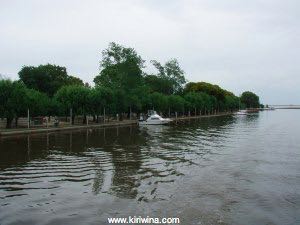
More empty moorings and the Hydrografica office.
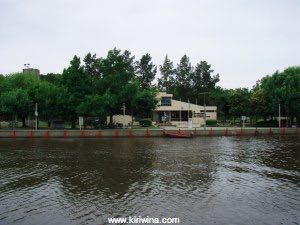
Mooring is normally bow anchor down and stern to quay.
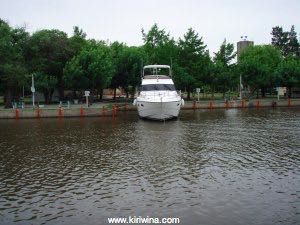
Bridge deck on our Cacciola catamaran.
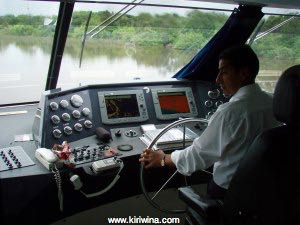
Nancy on Avenida Wilson Ferreira near the ferry terminal.
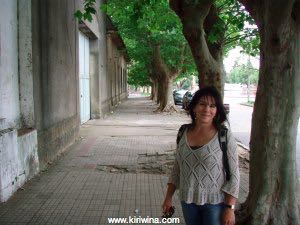
Pedestrian route along Arroyo de las Vacas.
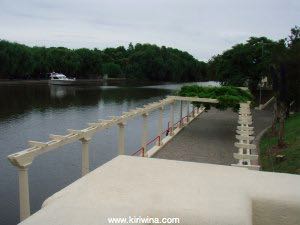
Interesting houses along the road to Playa Seré on the south side of Arroyo de las Vacas.
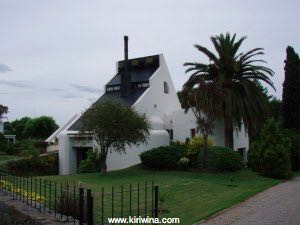
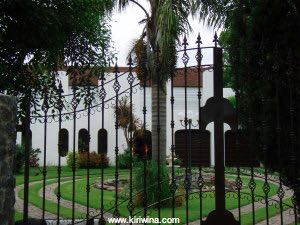
The skipper near Reserva de Fauna (didn't see any) on the road to Playa Seré.
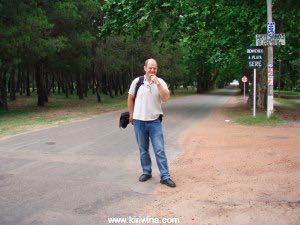
Playa Seré
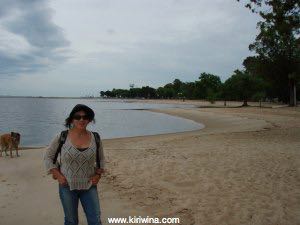
Entance to Carmelo harbour from Rio de la Plata.
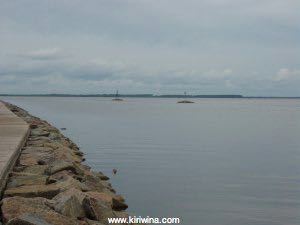
Welcome to Carmelo.
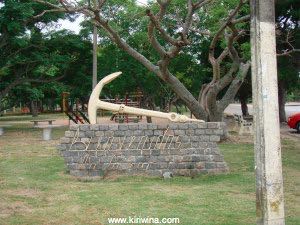
Lunchtime refreshment. This is not locally controlled company. It is owned by the mega conglomerate ABInbev.
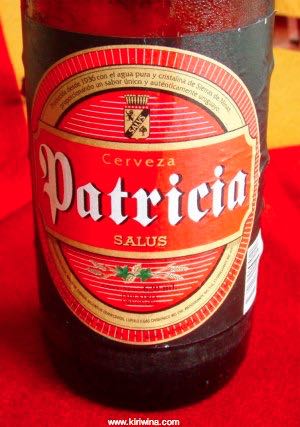
Playa Seré with Rio de la Plata beyond.
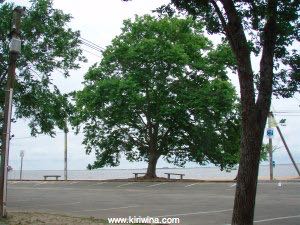
Hidrografia facilities adjacent to the yacht moorings.
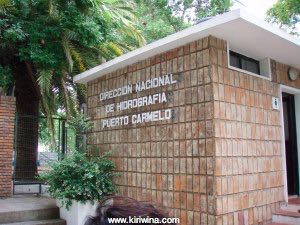
The first rotating bridge in Uruguay. Built in Germany and erected here in 1912.

We didn't see it open but this photo shows the bridge open to allow river traffic.
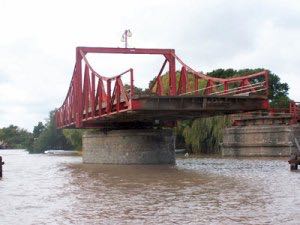
An old steam crane built by Grafton and Co of Bedford.
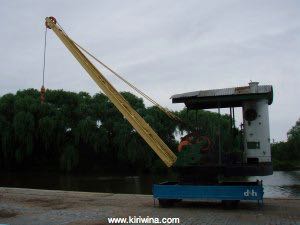
While looking around for some information about this company I found an interesting article on NZR Cranes.org. It is worth quoting.
Grafton & Co (Bedford)
Alexander Grafton (1845-1807) was articled in Paris before joining Appleby Bros. in 1867. He remained with the firm until 1879 during which time he spent 4 years in Egypt in charge of their work with the Sudan Railway and other contracts, and rising to assistant manager. He then spent more time in Paris before returning to London to set up his own firm, which was known from 1883 as Grafton &Co.
The company supplied a wide range of iron work including building framing, gasworks materials and locomotive spare parts, as well as contractors cranes, both hand and steam. Initially these were purchased in batches from Jessops of Leicester (later Jessop & Appleby Bros.) and resold either as standard or with customer specified extras. After Grafton entered partnership with C.Q.Henriques (a Frenchman) the company became an independent producer. The Vulcan Works were developed at a large site at Bedford with a LNWR connection in 1886.
Grafton had been granted a patent in 1882 for a loose race slewing gear with a conical seat. Patterning a new design on the Leicester produced 'Tilbury' crane included derricking and travelling functions (although these were later added by Jessops), and incorporating the patent slewing gear, this became the basis for what was known as the 'London' type crane. The crane had a short centre pin and horizontal engines, allowing a low centre of gravity. Brownlie notes that Grafton had the design perfected almost immediately and only minor details were added over time. The importance of this becomes clear when it is realised that manufacture continued into the 1960's.
The other important facet of the Grafton & Co. manufacturing was the use of standard sizing. At a time when many cranes were produced on a one off basis, Grafton produced five standard sizes in the 2 to 10 ton range. Castings were standardised and gearings were at standard centres, meaning only a few mechanical parts needed to be adjusted to suit customer requirements. Crane carriages were produced in a range of widths to meet gauge requirements. Any special contracts required little revision of drawing work and some extra machining. The foundry work was alsosystematic, with castings produced in batches and marked for model and size (very useful when spares were ordered). Because the company concentrated on sizes that were in demand it was able to keep one or two standard cranes in preparation allowing a fast response to customers. The company had also rigorously tested its cranes, noting engine and hoisting speeds for a variety of loads, derricking times and other useful details for customers, down to coal consumption.
Grafton cranes were put to a variety of uses. As well as industrial, many were used for docks and wharves, and there were also railway customers. The latter were primarily for permanent way work. As well as UK railways export markets included Scandinavia and Argentina. One crane is known to have come to New Zealand, being imported by the New Zealand Midland Railway.
After Alexander Grafton's death in 1907, control of the company passed to his nephews. Although some development work continued (using new materials such as phospher-bronze and steel changing from chain to wire rope, and converting to new power units) business began to reduce in the post WWII period as railway and shipping demands changed. The company had little business after 1960, and follwing the death of one of the nephews in 1963 dissent amongst the family saw the Vulcan Works close. The assets and goodwill of the company was transferred to Taylor & Hubbard who maintained a parts service for Grafton cranes. The UK's Historical Manuscripts Commission holds records for Taylor & Hubbard up to 1981, but I do not know what has become of the company since.
Other examples of Grafton products in South America can be found here.
Uruguayan flag on an our Cacciola ferry.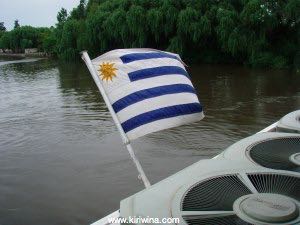
Returning via Canal Vinculacion work was in progress on a very large new housing/mooring development. 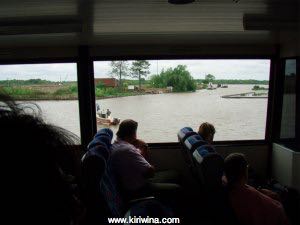
Along the Rio Lujan old ships are not scrapped. They are run into the bank and allowed to rust away (slowly).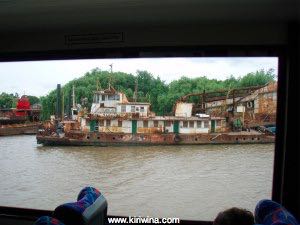 .
.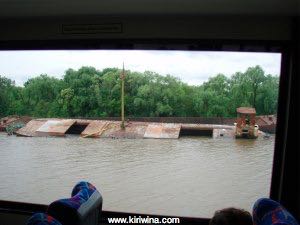
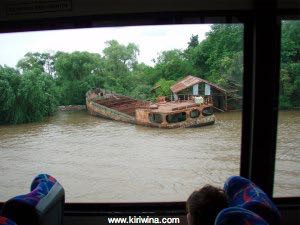
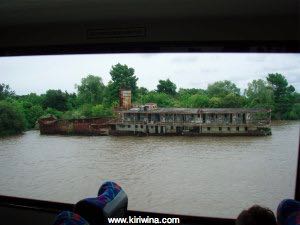
Prefectura Z28 Class WPB Patrol Boat "Madryn" based in Tigre. Built by Blohm & Voss 20 of these boats entered service in Argentina between 1979 and 1980.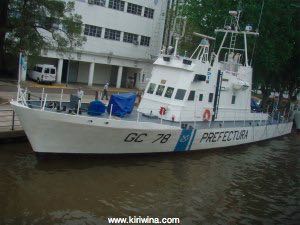
A Tigre built Cacciola catamaran ferry of the type we were travelling on.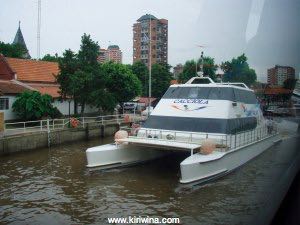
The international ferry terminal at Tigre.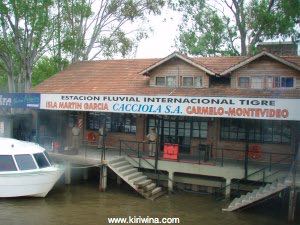
With very, very careful attention to water levels it would be possible for Kiriwina to do this trip.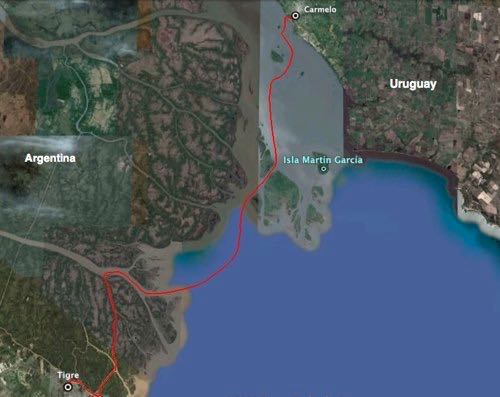
Puerto Madero
Then a visit to the Prefectura to checkin. Again, matters were a bit confused. I gathered that I had all the correct documents but presented them with the wrong form. I think the fact that we are a foreign vessel on a domestic voyage is what is causing some confusion.
Back to Puerto Madero where I had been allocated a new berth C30 and needed to shift. Easy peasy. Kiriwina's gelcoat badly needs polishing and waxing. I noticed a couple at work on an adjacent boat and got an uppish quote of Arg$1,800 (about £280) which is more than I paid in Devon before leaving.
A previously alive inhabitant at Dique 1, Puerto Madero.
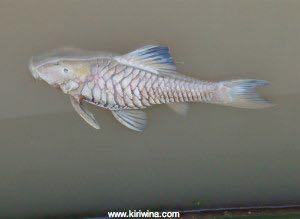
Clubhouse and administration complex at Yacht Club Puerto Madero.
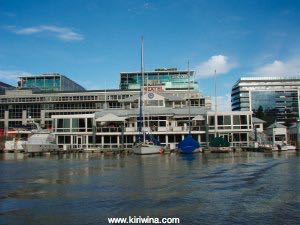
CNV to Yacht Club Puerto Madero
Once on board we stowed the dinghy and got away around 09:30. Many thanks to all at Club Nautico Victoria for their hospitality and assistance during my stay. The facilities have been excellent and the boat was always secure whatever the weather. I was able to leave for long periods without concern for the safety of Kiriwina.
En route CNV to Puerto Madero, Buenos Aires.
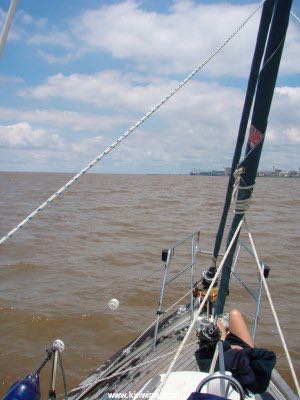
We motor sailed all the way with 10-15 knots fine on the port bow. It was more motoring than sailing with short choppy seas. Despite there being a falling tide water levels were quite high due to recent S-SE winds.
Passing through Darsena Norte with Yacht Club Argentino in the background.
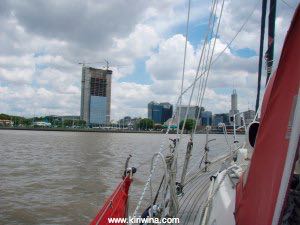
Passing Yacht Club Argentino where I arrived in Buenos Aires on 18 December last year.
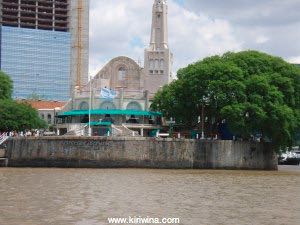
Unlike last time I had reserved a berth. We only waited 5 minutes before the swing bridge opened and 5 boats left.
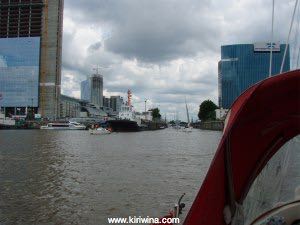
A marinero was there to escort us through the entrance and on to our berth where he assisted with mooring.
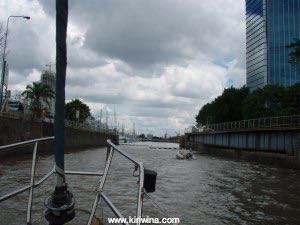
Approaching our berth C8 at Yacht Club Puerto Madero.
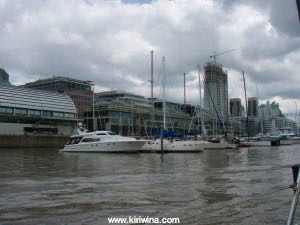
All fast alongside at 14:30 on a warm and cloudy sunday afternoon.
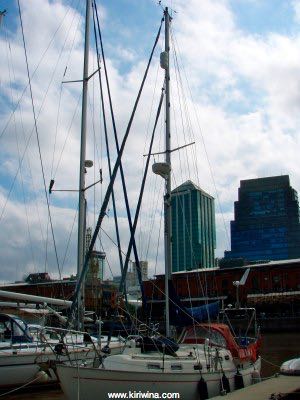
It was a pleasant change to be able to step over the rail directly onto a dock. I haven't done this since December 2007 at La Gomera in the Canaries.
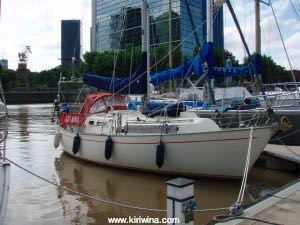
A view from our berth at Puerto Madero.
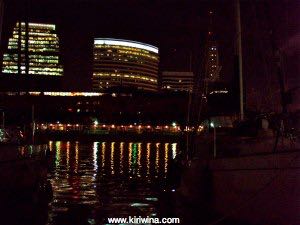
TBC Day in the Delta
TBC had another outing in the Delta today but the weather looked a bit dodgy.
Boat preparation on the ramp at TBC.
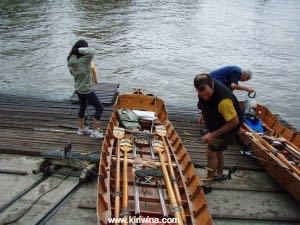
Nancy and I shared a 3 seater with Sylvina who was relatively new to rowing. Ten minutes after leaving the ramp the heavens opened as a series of thunderstorms passed through. Sylvina was not too happy with the conditions so we dropped her off and continued with the rudder shipped but without anyone steering. Not a good idea.
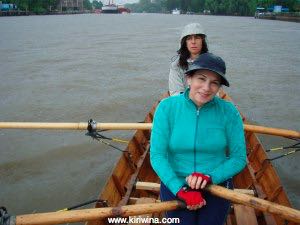
It continued to rain heavily with the boat pulling substantially to port. Our course was an erratic dogs leg.
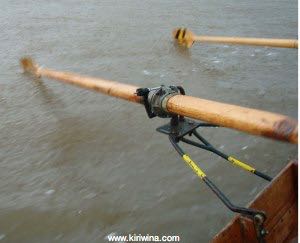
Just into Rio Espera we were surprised to find this ocean going german yacht "Carioca" moored alongside a swiss owned delta cottage. Must be plenty of water although one would need to keep a close eye on overhanging trees.
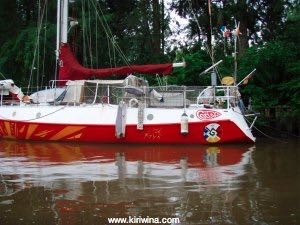
We arrived for lunch, some way up the Rio Espera, soaking wet and after a two hour break returned in record time (for us) to TBC. This time we unshipped the rudder, as advised, and generally kept a very good course at a rapid pace.
Nancy back at the club with new mascot and boat.
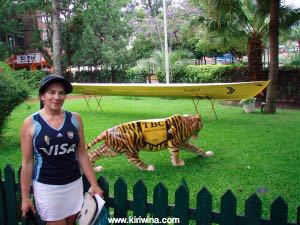
Kiriwina arrested by Prefectura Naval
Kiriwina had been arrested by the Prefectura Naval and was prohibited from leaving her berth under threat of severe penalties. The club apologised and said they were going to chain and lock Kiriwina to her mooring.
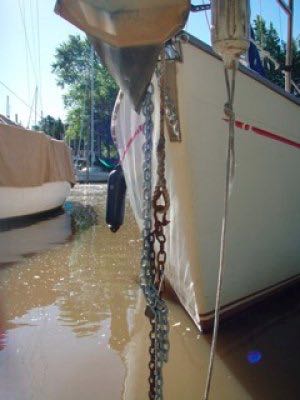
After 10 minutes at the Prefectura office in San Fernando all was resolved and I was told Kiriwina would be freed. The Prefectura Naval are a well funded body responsible for pretty much anything to do with commercial and leisure navigation and for policing waterfront areas. They operate all over Argentina including inland lakes and rivers. I saw them in Bariloche and Calafate.
There are offices at regular intervals between Buenos Aires and Tigre each responsible for a certain length of coastline.
San Fernando was a relatively new office and when conducting a routine check at CNV they noted Kiriwina was a foreign vessel. CNV had a copy of my passport details and vessel registration but not my Aduana (customs) document. Back in the San Fernando Prefectura office there was no record of Kiriwina. The handling officer assumed non-compliance and issued an arrest order.
All my documents had been lodged with the San Isidro Prefectura, as I had been instructed to do, but there does not appear to be a centralised register and Prefectura offices are not directly linked.
I was not given a document confirming compliance and was told that an officer would visit CNV and authorise them to release Kiriwina. As at 17:30 this had not happened.
Asado and Departure Preparation
Some very tame birds came to feed.

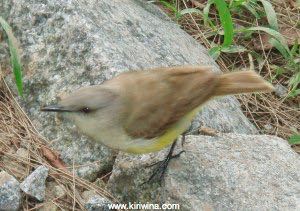
Excellent Argentine wine with delicious meat cooked slowly and carefully.
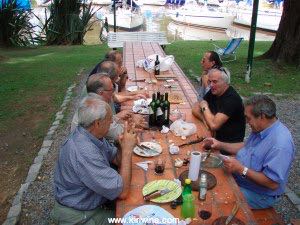
Afterwards I went back to CNV to prepare for departure on Sunday. Today the water was at its highest for quite some time.
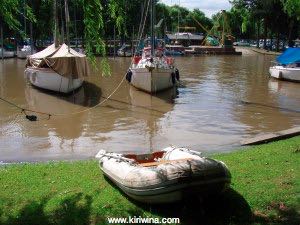
My dinghy had picked up quite a bit of fouling since I last washed it in August. In Brazil it would pick up more than this in a week or two.
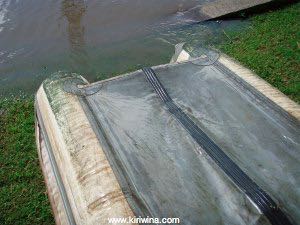
While scrubbing away I noticed a club launch arrive with a prefectura officer who set about photographing my boat. He took some photos and went away without saying anything to me.
Meantime the water level rose over the retaining wall and onto the lawn.
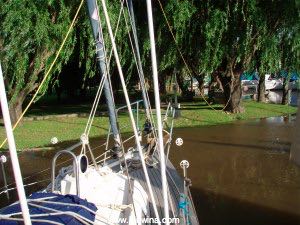
Last year Kiriwina spent a lot of time at anchor in Brazil. Today when cleaning the anchor cable I was puzzled by differences in deterioration levels over the length of the chain.
My conclusion was that the section at left was on the bottom but not dragged about very much. Second from left, in the worst condition, was a section that would have been on the bottom and dragged about a lot. The third section was in the water but usually not on the bottom and the cleanest section at right was rarely in the water.
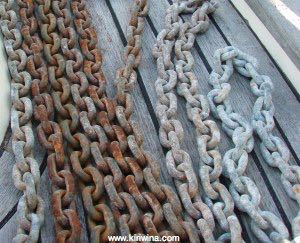
On the way back to Tigre calle Dardo Rocho was flooded for several hundred metres. Apparently, the cause was high water levels causing some storm drains to backup.
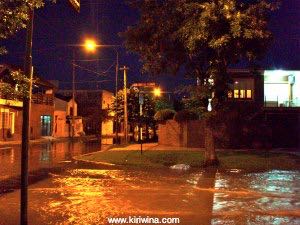
Sunken Yacht
Back in the spring we noticed an old motor/sailing yacht moored there with the owner working on restoring her.
Some weeks later in July she had sunk, was listing to starboard and appeared to be abandoned.
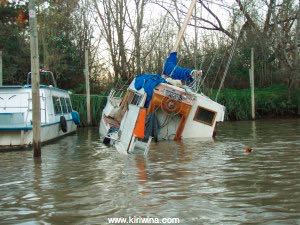
Each time we passed her condition had worsened. A lot of gear and fittings including sails and boom had been removed and the starboard outer shroud had broken.
Then in November a salvage operation appeared to have started. Two men were working on her and appeared to be using blue barrels in an attempt to float her. She was upright and the broken shroud had been repaired.
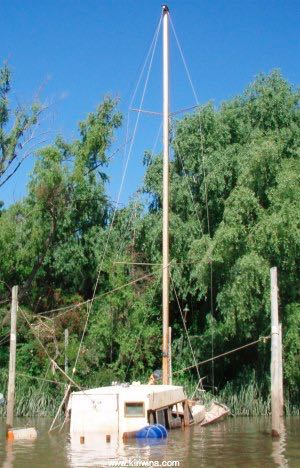
Today, sadly, no further progress had been made. The tide was higher with the cabin almost completely submerged.
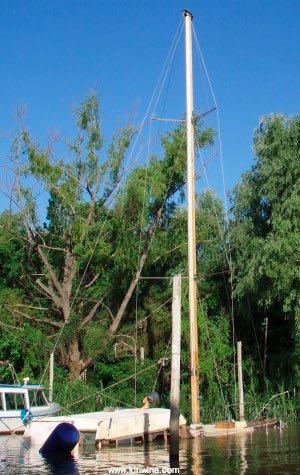
Windlass Motor - Installed
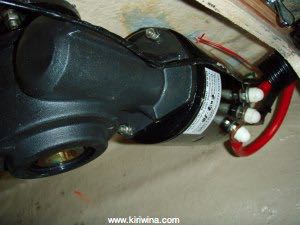
I hope so. We have had a lot of rain recently and there is no sign of any leaks. Just to be sure I gave the many hole patches another coat of epoxy filler before fitting the motor.
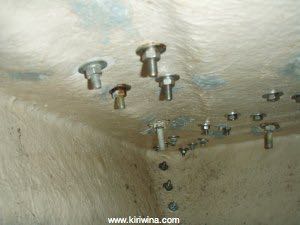
This is the anchor chain locker drain which allows any water which gets in here to drain aft to the bilge. I like this idea which pretty much avoids the problem of a full chain locker causing the bow to dip further exposing the foredeck in heavy weather.
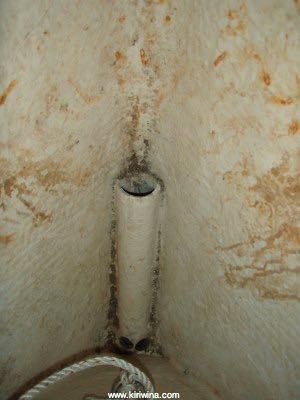
Also took 40 litres of diesel at Arg$2.658 pesos/litre (£0.42p). This compares well with Reals 2.72/litre (£0.94) the last time I took on diesel (verano) at Paraty in Brazil about a year ago.
Alternator and Starter Installed
First up was the installation of the refurbished alternator and starter motor. Both were fitted without any problems and the engine started immediately.
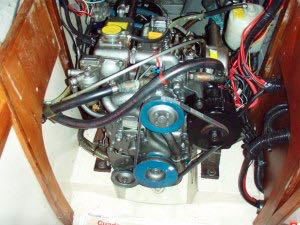
The electrical wiring installation on my Yanmar 2GMF is a real dogs breakfast. I have not paid much attention to it as there have been no problems. At some point it will have to be sorted into some semblance of order.
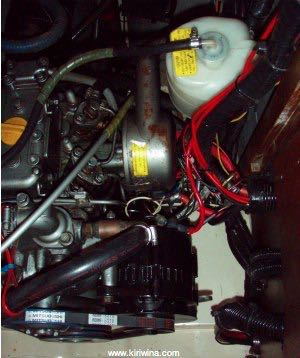
The engine has had little use this year and is in excellent condition despite being over 12 years old with 1575 running hours. However parts of the installation have rusted badly, including the shaft coupling, all four engine mounts and the air filter housing.
Teatro Ateneo
It is a lovely little theatre on Paraguay just south of Avenida 9 Julio.
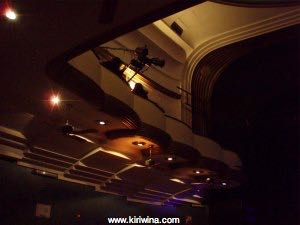
We went to see Juana Molina. An excellent concert if a little short at 1hr 15 minutes.
Starter and Alternator Overhauled
My newly refurnished Hitachi alternator...
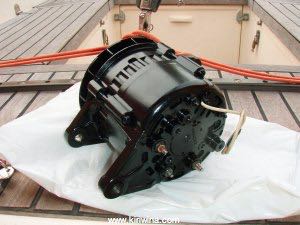
...and Hitachi starter motor.
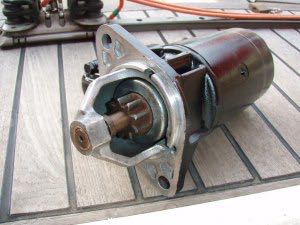
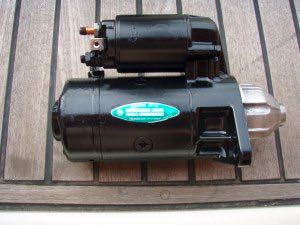
Ready for installation next week.
Windlass Motor Repaired
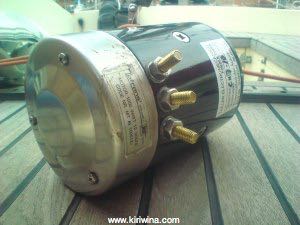
Prior to reinstalling the motor I had to do something about deckhead leaks.
The cause, again, was holes drilled by whoever installed the teak deck. I counted 24 holes in the chain locker deckhead. Not all leaked but enough did to ensure the motor regularly got wet and lived in very damp environment. All were cleaned out and filled with epoxy.
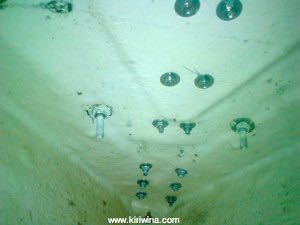
Last year my anchor chain spent a lot of time on the bottom in Brazil. The portion most exposed (5-20m) is now very rusty with the galvo having almost completely broken down. Time for re-galvanising or replacement.
Back to deckhead leaks. We have had a bit of rain recently and it looks like my previous efforts may have missed one or two. The port upper cabin locker was very wet in places. Another filling job!
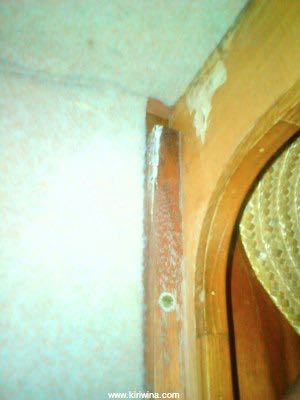
Peña de la Ribera - Olivos
Headline talent was Micaela Chauque from Salta. Excellent, as was the food.
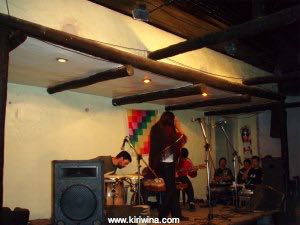
Windlass Motor
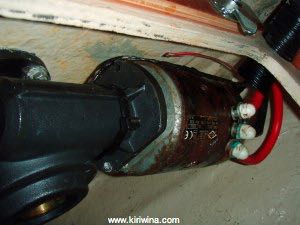
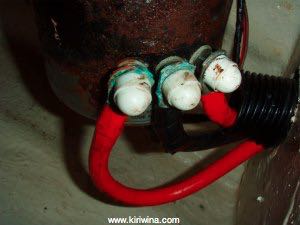

No problems with removal. Disconnected the wiring and two retaining bolts and it was out. Also, a closer examination of the chain locker deckhead revealed a larged number of drilled holes, some of which were leaking. This will mean a big session with epoxy filler. I'm still baffled as to why all these holes (well over 100) were drilled.
Later I dropped the motor off at Petrei & Foglia in Tigre.
El Rosedal
Rosalia Castro de Murguía.
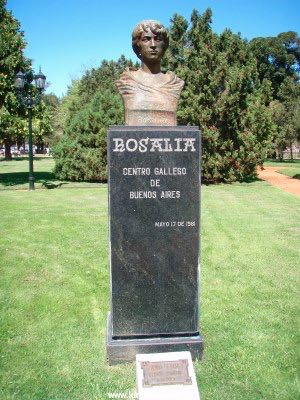
There are two smallish lakes where one can hire pedalos or row boats. We stopped for a photo on the bridge (8 on the map below).

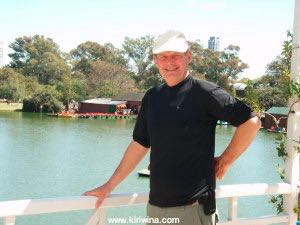
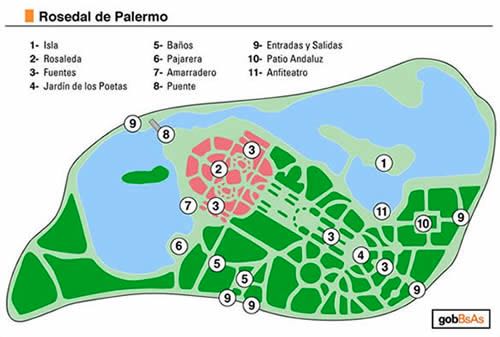
Tigre Delta
This beautiful motor cruiser passed us with Sarmiento's cottage in the background.
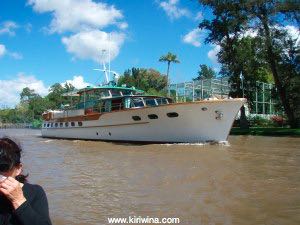
Australian style cottages with wide verandas.
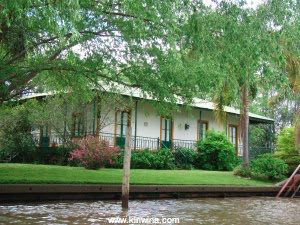
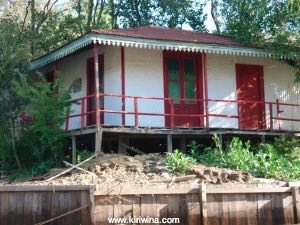
We were late starting and were the last to arrive for lunch at Guacamayo.
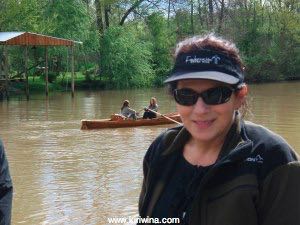
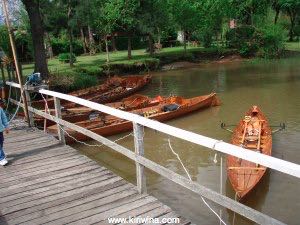
We also missed the photo op but more are posted here.
Santiago to Buenos Aires
Luggage sculpture at Santiago airport.
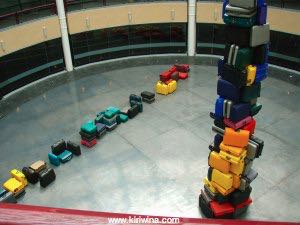
A quick coffee before flying.

Nancy flew LAN Chile, her plane seen here with the Cordilera beyond.
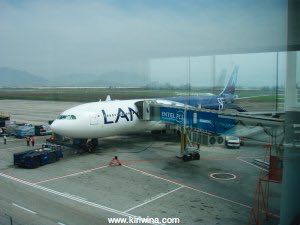
I had an electronic ticket and had checked in online. Absent a printer I presented myself for boarding with a boarding card displayed on my I-Pod Touch. Security argued a bit but let me through. Chilean immigration were having none of it and sent me back to the Pluna checkin desk to get a paper boarding pass. So much for electronic ticketing.
Chilean air force business jet at Santiago as we taxied past.
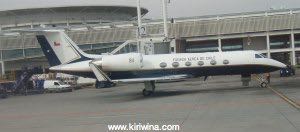
Flying east over the Cordilera.
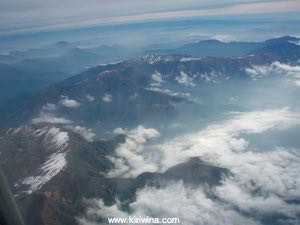
My trip back was more less on time and uneventful. We flew into Montevideo passing low over Yacht Club Uruguayano where I stayed back in February.
At Aeroparque in Buenos Aires Argentine police were photographing all disembarking passengers.
Santiago
The car was due back at 13:00 so we nipped into town to have a look around the area of La Moneda, Presidential residence and seat of the Chilean government.
Front view.
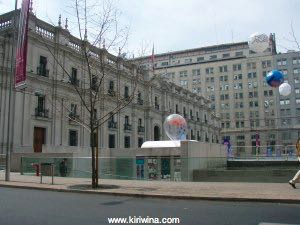
Contraloria General de la Republica.
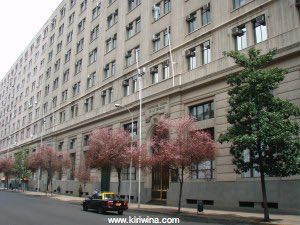
Rear view from Plaza de la Ciudadanía
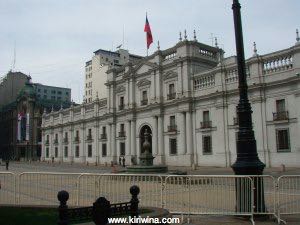
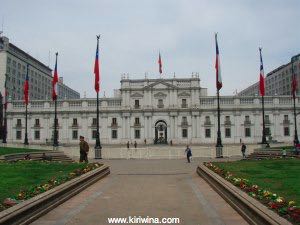
Salvador Allende
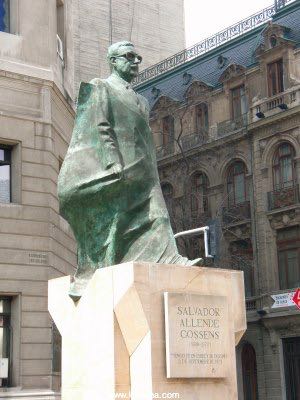
The inscription reads. "Tengo Fe En Chile Y Su Destino". I have faith in Chile and her destiny.
Floral tributes to Allende. He was deposed by a military coup on 11th September 1973. The text of his last speech is here.
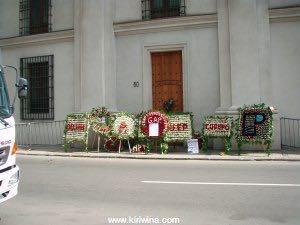
La Moneda, front view from the other side.
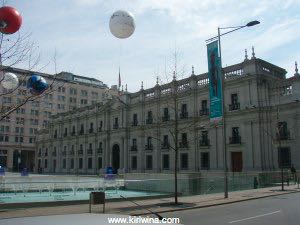
La Moneda under attack September 1973.
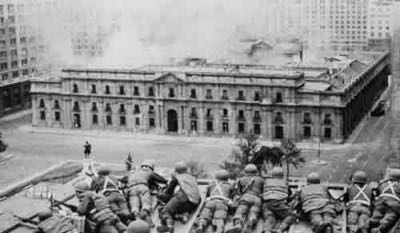
View from La Moneda towards Avenida Bulnes. Chile celebrates her bicentenary next year.
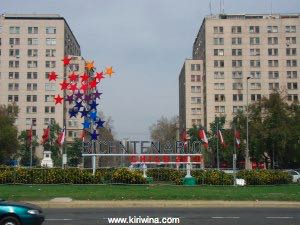
Mounted Caribineros deployed just in case demonstrations on the coup anniversary turn violent.
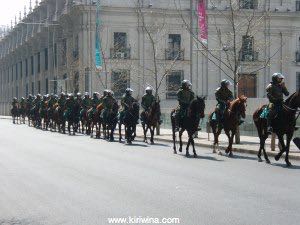
Baquedano metro station.
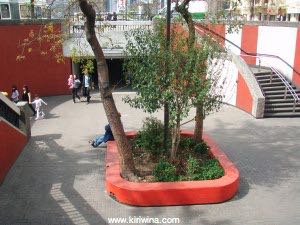
Model train display at Baquedano station. Copiapo is the capital of Atacama province in northern Chile.
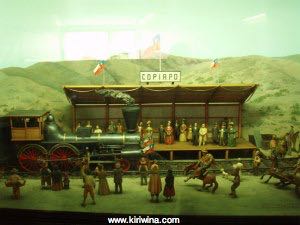
More of Santiago's very impressive metro.
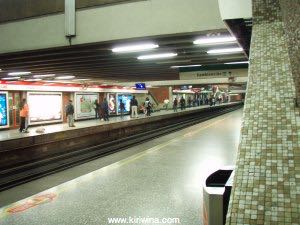
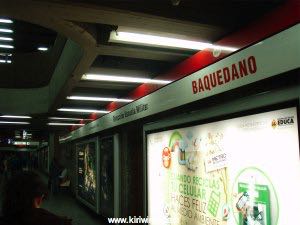
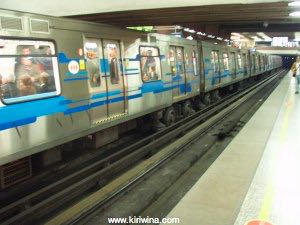
Olmue, Valparaiso, Viña del Mar and Santiago
Nancy outside our cabin with the little Kia.
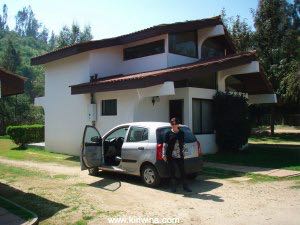
Reception.
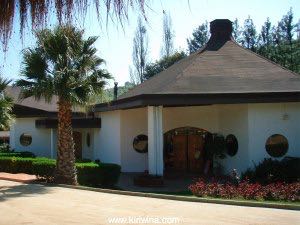
We drove down to Valparaiso on the Pacific coast where it was again noticeably cooler and foggy due, I understand, to the influence of the Humboldt Current.
There is convenient parking underneath Plaza Sotomayor next to Muelle Prat. The plaza itself is surrounded by and interesting array of buildings.
Valparaiso port and some ships of the Chilean Navy.
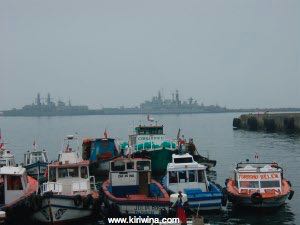
Port Authority building.
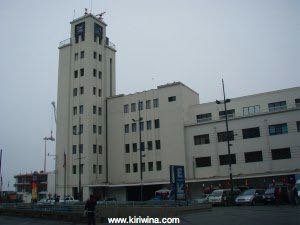
Imposing Armada de Chile building.
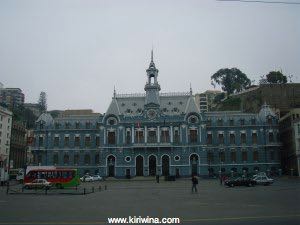
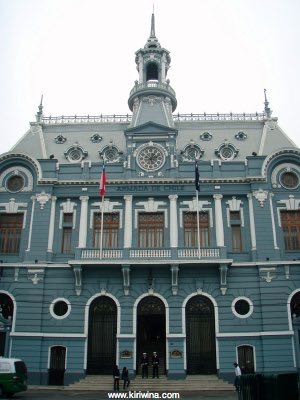
Rear entrance to the navy building.
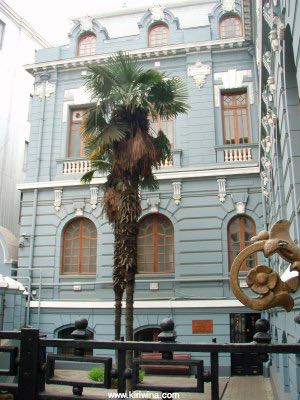
Art and Cultural Centre.
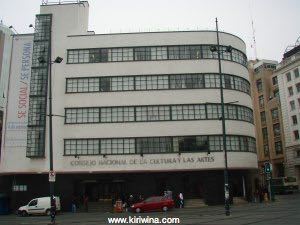
Hotel Reina Victoria.
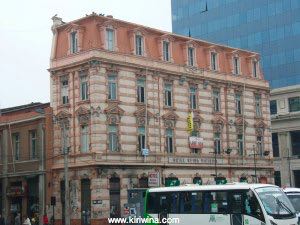
Fire station.
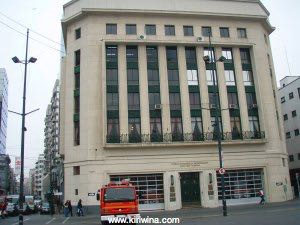
Memorial statue - Arturo Prat.
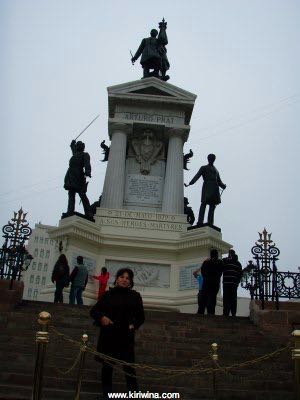
Cia Chilena de Navegacion Interoceanica S.A.
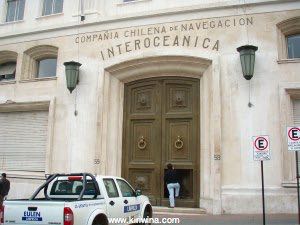
Fresh produce is very cheap in Chile. These avocados cost C$1000 (£1.15).
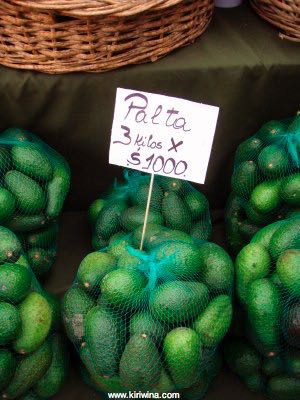
Memorial to Lord Cochrane who commanded the Chilean Navy amongst others. More about him from the RN and the Chilean navy.
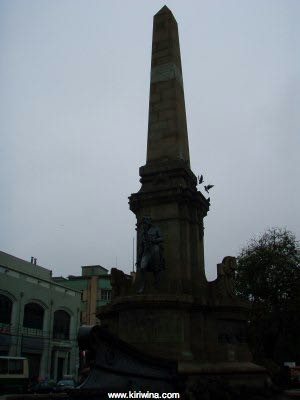
Ships at anchor off Valparaiso.
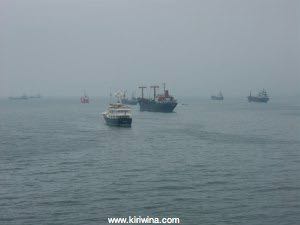
Houses on steep hills overlooking the port area.
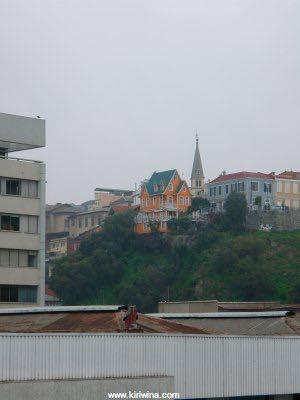
Funicular railway. One of many in Valparaiso.
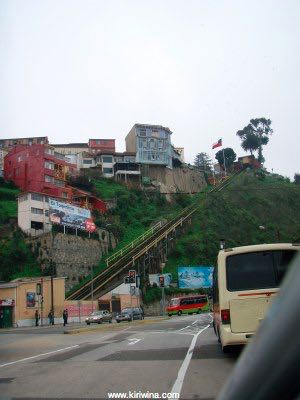
Back in the car we drove up a winding road to residential areas overlooking the port. All cabling is above ground.
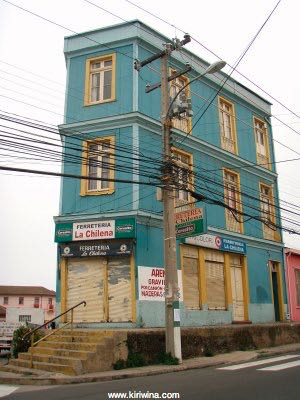
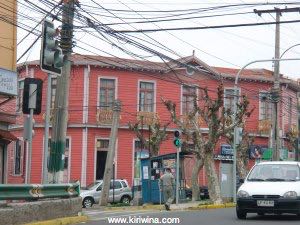
Very steep streets.
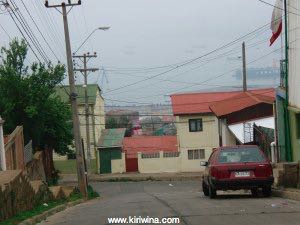
Trolleybus on Plaza Sotomayor. A wealth of detail on these buses here.
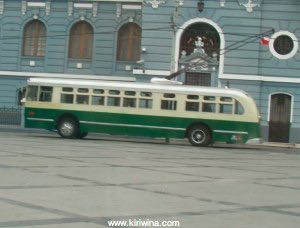
From Valparaiso we drove a few miles up the coast to Viña del Mar.
Our backs to the Pacific at Reñaca beach. Sailing west from here the next land would be Dudley beach south of Newcastle, Australia some 6158.46 nautical miles away.
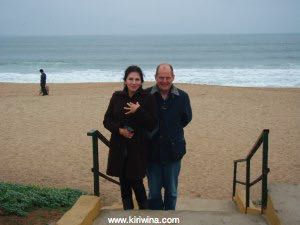
Viña del Mar is home to the Chilean navy Escuela de Armamentos.
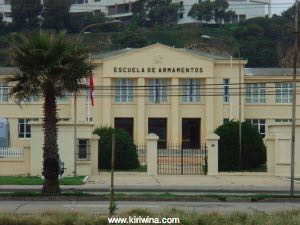
Lots of old guns from scrapped Chilean warships. Mostly British and American built.
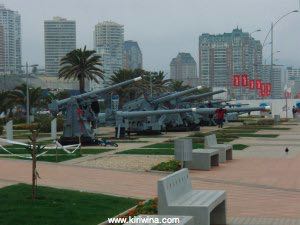
I hadn't seen these before. Large transparent spheres in a shallow pool. A child is sealed inside (with enough air) and then rolls the sphere around the pool. They are called water balls.
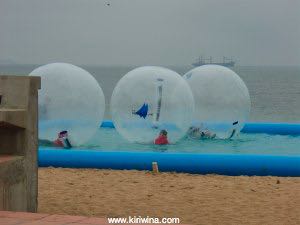
Before going back to santiago we stopped by we stopped by Edificio Miramar. Around US$110,000 buys a new 2 bedroom apartment with (somewhat distant) sea views. I thought this was a bit expensive especially as bedroom 2 could be described as a large cupboard.
San Vicente to Olmue
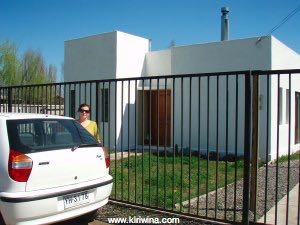
San Vicente lies in a river valley a few miles to the west of route 5. To the east is the Andes cordilera.
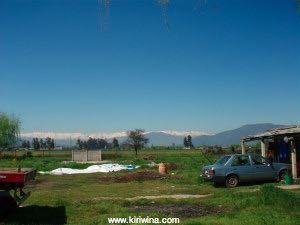
Route 66 took us from San Vicente via Peumo to San Antonio on the pacific coast.
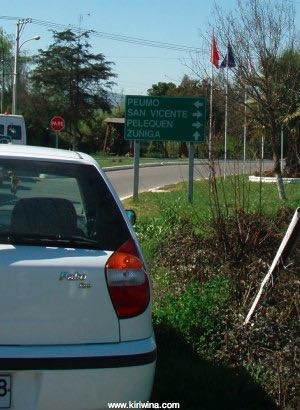
It was a lovely drive on immaculate roads through farmland and winding hill roads. Roadside produce stalls were everywhere. We bought a large bag of oranges for 1,500 pesos (about £1.70).
Just before San Antonio we dropped down to the foggy Pacific at Santa Maria del Mar where it was noticeably colder.
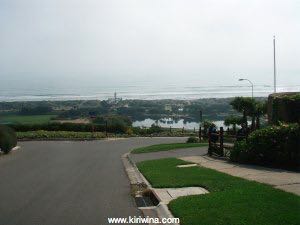
Then we skirted round San Antonio and continued across country to Olmue near Parque Nacional La Campana.
Olmue is a lovely spot and we visited sister Jackie who lives in a not quite finished eco-house just outside the town. Before dinner we took a walk up into the park foothills.
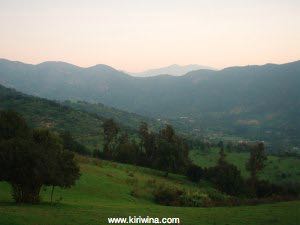
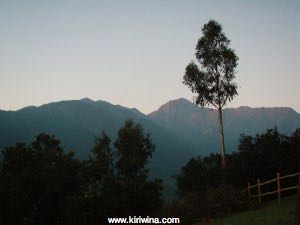
Nancy with sister Jackie at sunset in Parque Nacional La Campana.
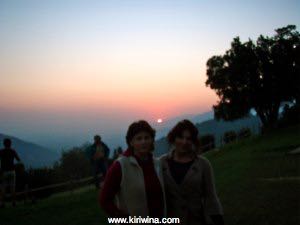
After an excellent dinner at Campo Alto
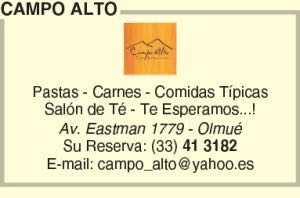
We looked around for a hotel. There being none suitable in Olmue we set off for Viña del Mar but around 23:30 we stumbled on Hosteria de Valle Verde where we spent the night.
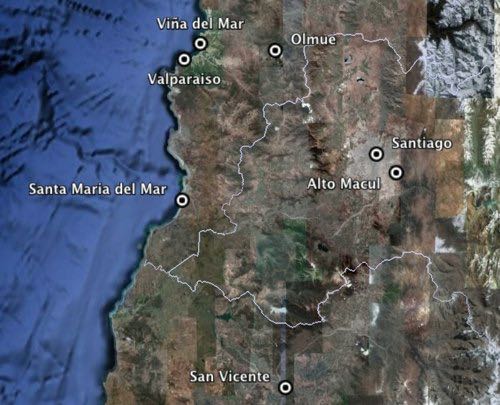
Santiago to San Vicente
As we packed I noticed the bathroom shelf.
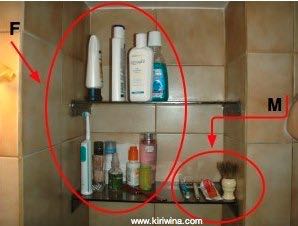
The hotel restaurant is on the 5th floor with lovely views over Cerro Santa Lucia.
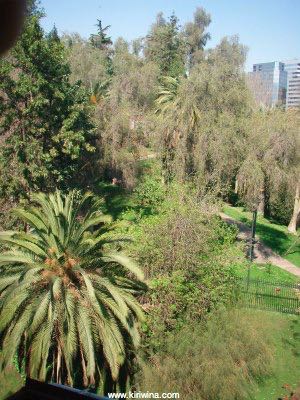
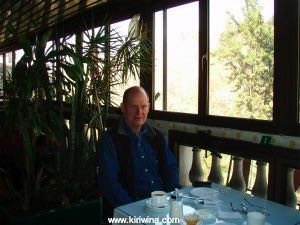
Our hire car was delivered to the hotel by Maximo Rent a Car. We got a Kia "Morning" costing US$59 per day with unlimited mileage and Santiago tolls included.
First stop was the top of Cerro San Cristobal in Parque Metropolitano with stunning views across Santiago to the Cordilera.
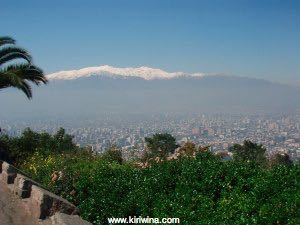
One can also walk to the top of take the funicular railway.
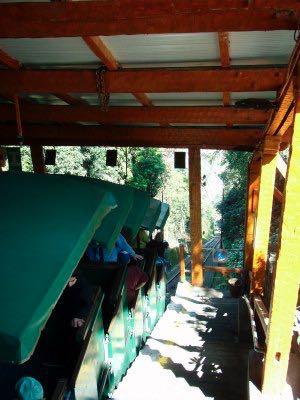
There is also a church and lots of craft shops.
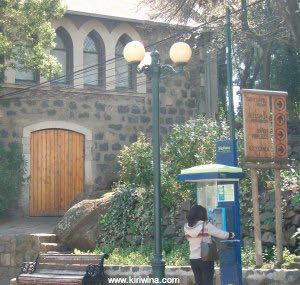
After stopping for lunch on the outskirts of Santiago we headed south on Route 5. There are tolls on urban autopistas which are collected electronically. As a car approches a payment gantry the applicable toll is displayed. Then, as the car passes under the gantry, the required toll is taken from a prepaid device on the car. Presumably this is topped up somewhere as required. Very slick and it certainly avoids the queues found at manual toll booths in Buenos Aires.
We had to pay close attention to the somewhat infrequent signs. Without changing lanes we ended up heading west instead of south. Back on route 5 we continued south on a superb autopista. About an hour into the trip the Carabineros motioned us to stop for a spot check on our papers. They were very professional in immaculate uniforms.
Just after dark we arrived in San Vicente about 150k south of Santiago where we stayed with Nancy's sister Olga.

Central Santiago
First stop this morning was the beautifully kept National Library.
Peripheral lighting.
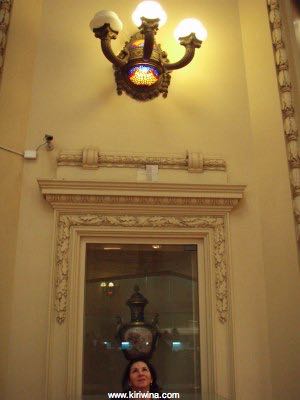
Skylight.
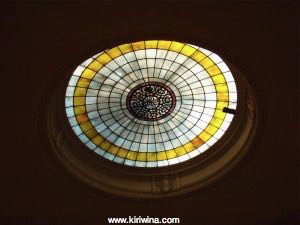
Chilena from 1948. Publicity for a photograhic exhibition elsewhere in the building.
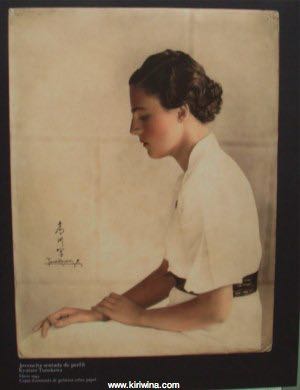
Old Santiago.
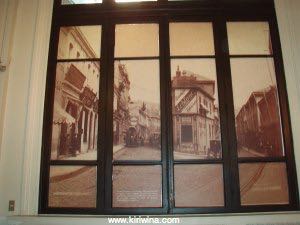
Another skylight and stairwell.
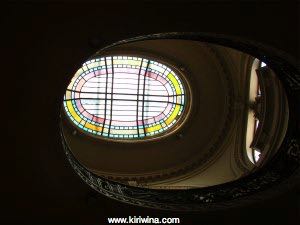
National Library.
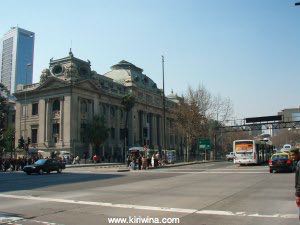
Paris London district.
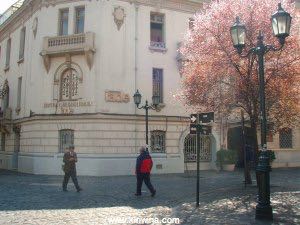
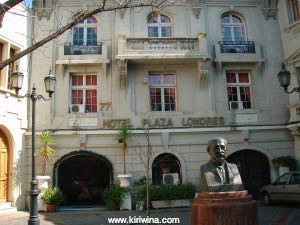
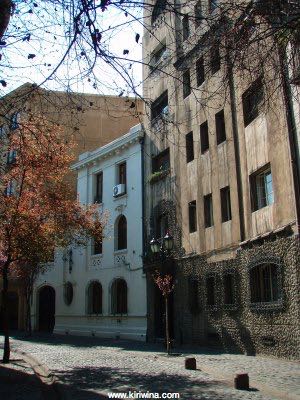
Iglesia Sacramentinos
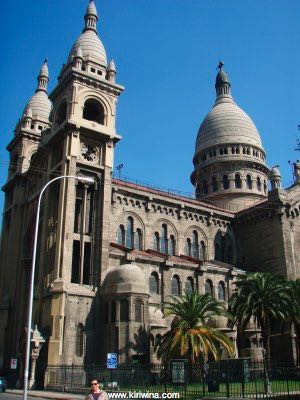
Avenida Bulnes
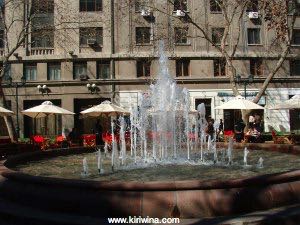
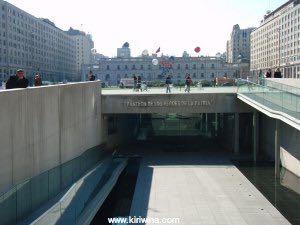
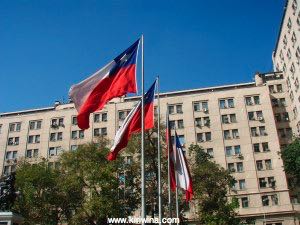
Immaculate metro carriage.
